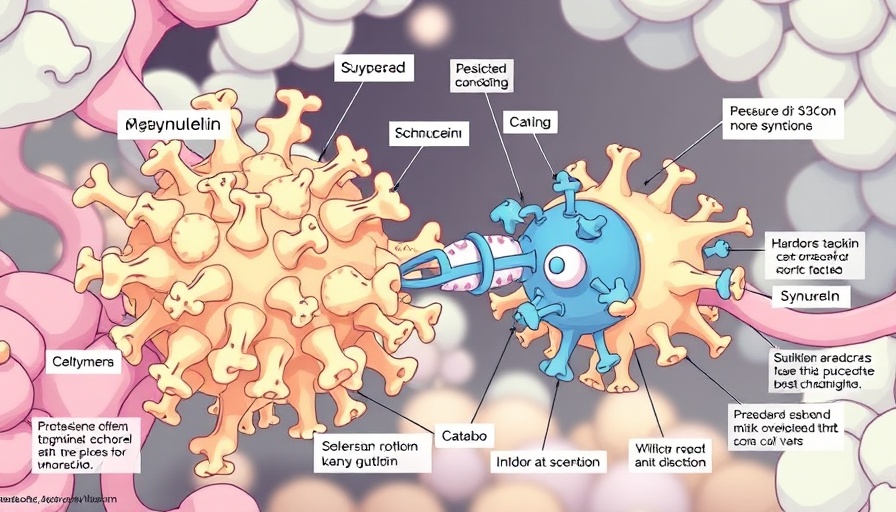
Understanding α-Synuclein and Its Role in Neurodegenerative Diseases
Parkinson's disease (PD) and Lewy body dementia (LBD) affect millions worldwide, with PD impacting an estimated 10 million people. Both diseases are characterized by the formation of Lewy bodies, which are abnormal aggregates of α-synuclein protein found in the brain.
Traditionally, much of the research into these disorders has focused on the rigid core of α-synuclein fibrils. However, a groundbreaking study by He Zhuohao's team from the Chinese Academy of Sciences has shifted attention to the flexible “fuzzy coat” of α-synuclein, a region that plays a crucial role in how these proteins spread throughout neural networks.
New Insights into the 'Fuzzy Coat' Mechanism
The recent study revealed that the characteristics of the fuzzy coat can greatly influence the neurodegenerative process. Researchers identified two variants of α-synuclein fibrils: Mini-P, which features a compact fuzzy coat, and Mini-S, which has a looser structure. The dynamic nature of these coats affects their ability to transmit pathological signals between neurons.
Mechanisms of Disease Spread: The Importance of Fibril Structure
Aided by advanced techniques such as cryo-electron microscopy and solid-state nuclear magnetic resonance, researchers found that Mini-P fibrils demonstrated a greater ability to seed neuronal cells compared to their Mini-S counterpart. This ability is partly attributed to how the compact coating of Mini-P encapsulates certain negative charges, limiting repulsion from neuronal receptors and enhancing cellular uptake.
The Broader Implications for Neurodegenerative Disease Research
Understanding how variations in fibril structures affect their behavior could be hard-hitting, especially for advancing therapeutic strategies. Research like this provides valuable insight into the mechanisms underlying the spread of pathological proteins, which is pivotal in developing interventions that might slow down or halt disease progression.
Relevance to Health and Wellness
As we explore the intricacies of brain health, the findings resonate with broader concepts of health and wellness. Finding effective ways to address neurodegenerative diseases can align with overall wellness initiatives. For those interested in enhancing their approach to mental health and longevity, understanding the role of neurobiology in conditions like PD can inspire preventative strategies and lifestyle choices.
Future Trends: Where Do We Go from Here?
Given the insights retrieved from this research, the future of neurodegenerative disease management may well intertwine with innovations in health and wellness products aimed at improving brain health. More research in this area not only holds the potential to improve the treatment landscape but can also lead to educational programs emphasizing the importance of lifestyle choices in mental health.
What You Can Do: Actionable Steps Toward Health and Wellness
If you are looking to enhance your health and wellness in relation to brain conditions and beyond, consider integrating aspects of functional medicine and naturopathy into your life. Engaging in therapies proven to support cognitive function, like yoga or brain-training exercises, and maintaining a nutritious diet can go a long way in promoting mental well-being.
Concluding Thoughts
As research uncovers more about the mechanics of neurodegenerative diseases, it paves the way for a more holistic approach to health and wellness. Understanding the molecular dynamics of α-synuclein could revolutionize how we tackle neurodegenerative disorders and promote long-term wellness. Actively engage with your community health resources, stay informed about the latest findings, and prioritize your brain health today.
 Add Row
Add Row  Add
Add 




 Add Row
Add Row  Add
Add 


Write A Comment